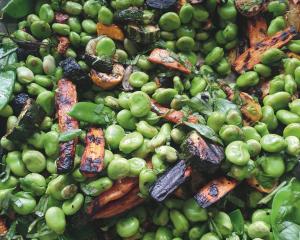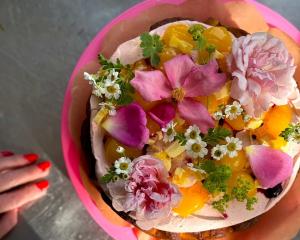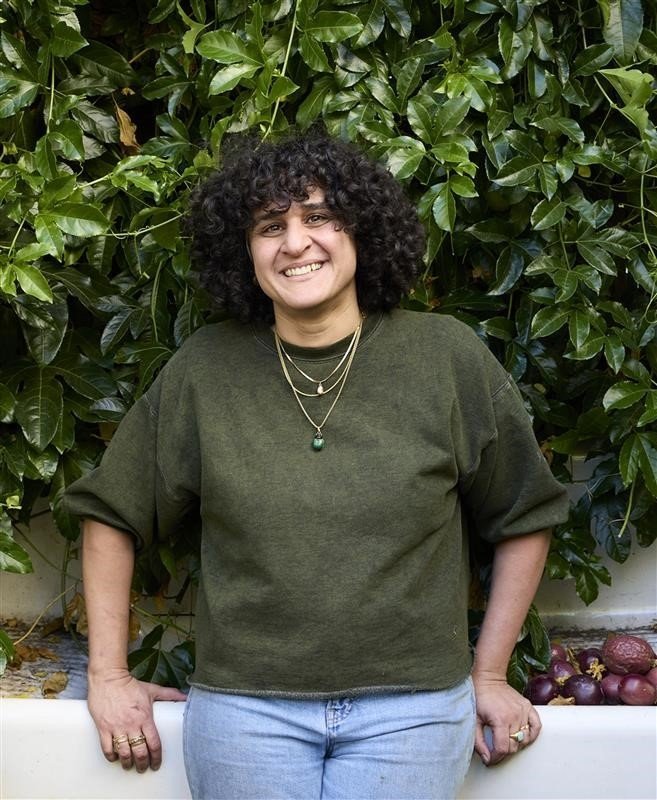
"I’ve obsessively collected and refined these treasures, large and small, over a lifetime of cooking."
As she believes sharing life’s pleasures only magnifies them she has shared her "good things" in her new book Good Things: Recipes to Share With People You Love.
Nosrat, who has cooked at world-class restaurants in California and Italy, talks in the book about the tough times she faced after Covid and suffering clinical depression.
"The sense of joy I’d always found in cooking, eating and more generally in life no longer felt attainable."
She began to recalibrate her values and developed a newfound appreciation for the most precious currency of time.
"It has reminded me that something as simple as cooking for my loved ones can carry as much meaning, as much worth, as any achievement or career milestone.

When a friend suggested she write a cookbook with her favourite recipes, Nosrat was shocked as she "hates recipes". Her first book Salt Fat Acid Heat was a manifesto designed to free cooks from relying on them.
"For as long as I’ve been cooking I’ve had a complicated relationship with recipes — I could never escape the feeling that each was an attempt to capture, quantify and define the ineffable."
Recipes, no matter how precise, will be affected by each cook’s ingredients, pots, ovens, altitude, season and many other variables, so even if following a recipe to the letter the result might not be the same.
"Good cooking isn’t about mindless repitition. It’s about being completely present with an experience as it unfolds. I believe it’s the job of a good recipe to guide and empower a cook to use all of their senses — including common sense — to make the best choices in the moment."
Most nights when Nosrat cooks at home the food is "extraordinarily" simple. "Most of what I cook on a daily basis may not be particularly innovative. But it feels new because I stock my store cupboard and fridge with condiments, toppings and herbs that allow for all sorts of possibilities."
The book
Good Things: Recipes to Share with People You Love by Samin Nosrat. RRP $70. Published by Ebury.
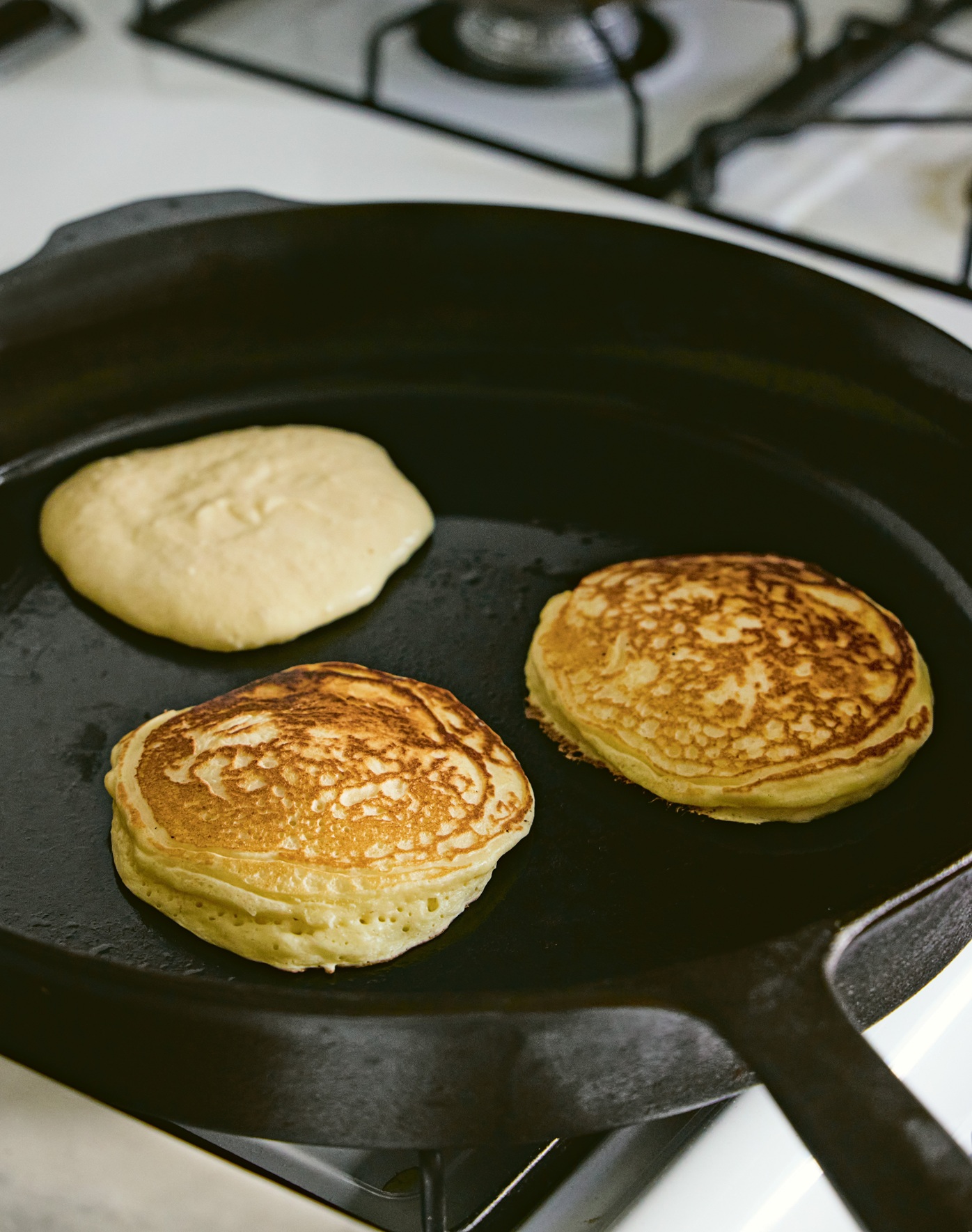 Ricotta custard pancakes
Ricotta custard pancakes

Yes, this is a three-bowl recipe. And yes, it involves whipping egg whites. But these pancakes, made light and custardy with a generous amount of ricotta, are heavenly clouds of fluff. The only down side (besides the bowls) is that you may never settle for any other pancake again.
Makes 16-18 7.5cm pancakes
Ingredients
130g plain flour
1 tablespoon plus
1 teaspoon sugar
1½ teaspoons (5g) kosher salt
1½ teaspoons baking powder
232g full-fat-milk ricotta
183g full-fat milk
2 medium eggs, separated
Unsalted butter or cardamom ghee (ghee infused with cardamom then strained), for cooking
and serving
Maple syrup, jam of your choice
icing sugar and/or fresh
fruit, for serving
Method
In a large bowl, whisk together the flour, sugar, salt and baking powder. Set aside.
In a medium bowl, whisk together the ricotta, milk and egg yolks until very smooth. Set aside.
Preheat a 25cm or larger cast-iron frying pan (or flat grill) over medium-low heat while you whip the egg whites.
In a small bowl, use a whisk (or handheld electric mixer on medium speed) to whip the egg whites to stiff peaks, about 3 minutes.
Add the ricotta mixture to the dry ingredients and whisk gently until just barely combined.
Then use a silicone spatula to stir in a small amount of the egg whites to lighten the batter.
Finally, fold in the rest of the egg whites with a light touch.
Melt just enough butter in the pan to coat the surface and increase the heat to medium.
Measure a 60ml ladleful of the batter into the pan.
If it doesn’t immediately begin to sizzle, wait until it does before pouring out more pancakes.
Cook the pancakes on the first side until the bottoms are golden brown and bubbles appear around the edges, 2 to 3 minutes.
Use a thin flexible metal spatula to flip — this is when they will thrillingly begin to defy gravity — and cook until golden brown on the second side, another 1 to 2 minutes.
Sometimes I like to flip a second time to make sure the pancakes get completely cooked through, but the only way to be sure that they are cooked is to tear one open and check.
Transfer the pancakes to individual plates or a warmed serving platter, wipe out the pan and repeat with remaining batter.
Serve immediately, with butter or ghee; syrup, jam, or icing sugar; fresh fruit; or any other desired garnishes.
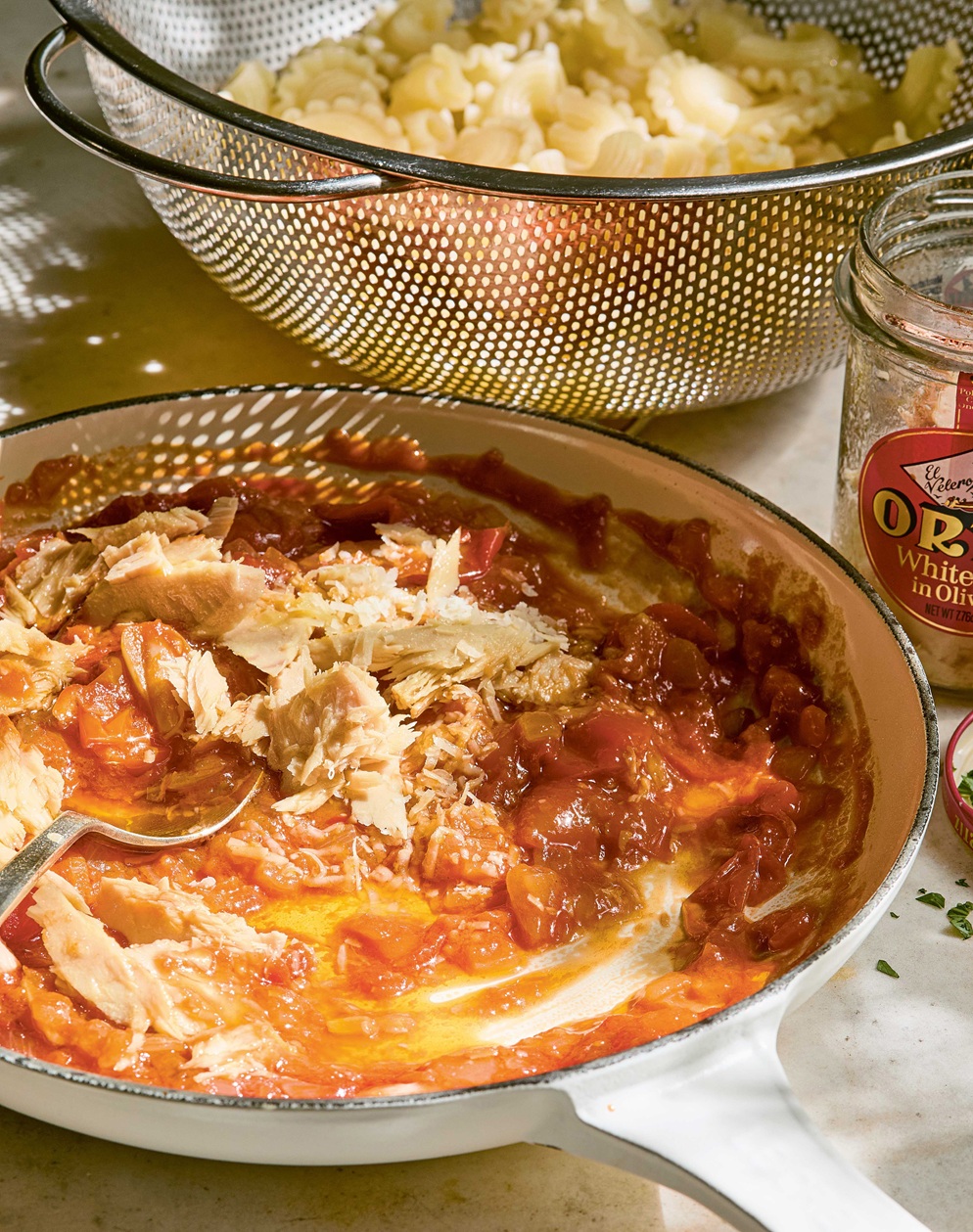 Spicy tuna pantry pasta
Spicy tuna pantry pasta

This has been my go-to store cupboard pasta since I moved to Italy for a kitchen apprenticeship in the autumn of 2002. On one of my first evenings in Florence, I had dinner at a pizzeria near Piazza Santa Croce. In the Tuscan gloaming, I ate a pizza topped with spicy tomato sauce, flakes of oil-packed tuna, and a lightly dressed pile of rocket. That pizza — made with ingredients I’d never imagined combining — gave me my first glimpse of all the ways my time in Italy would enrich me as a cook.
For the next two years, every time I went out for pizza, I scanned the menu for spicy tuna, but I never encountered it in Italy again. So when a craving for that pizza struck, I’d make myself this simple pasta instead. The key here is using quality staples: Tinned Italian cherry tomatoes, sometimes labelled pomodorini, are sweeter than their full-sized counterparts (though you can substitute 340g whole San Marzano tomatoes in their juice if needed). Italian or Spanish olive oil-packed tuna is truly superior in flavour and texture. And of course, real Parmesan, to which all other cheeses pale in comparison.
Serves 4-6
Ingredients
Kosher salt
Extra-virgin olive oil
1 onion, cut into 8mm chunks
4 garlic cloves, thinly sliced
2 anchovy fillets, roughly chopped
Calabrian chilli paste
1 Tbsp tomato puree
450g spaghetti, bucatini, linguine, or penne
400g tin cherry tomatoes
20g finely grated Parmesan, plus more for serving
285g to 340g canned or bottled Spanish or Italian tuna in olive oil, undrained
1 lemon
Finely chopped parsley, for garnish
Method
Bring a large pot of well-salted water to a boil.
Set a large non-reactive frying pan over medium heat and add 3 tablespoons of oil.
When it shimmers, add the onion and a pinch of salt.
Cook, stirring, until the onion is tender and just beginning to brown, about 12 minutes.
Move the onion to the edges of the pan and add 2 tablespoons of oil and the garlic. Cook, stirring, until fragrant, about 1 minute.
Add the anchovies, chilli paste to taste, and tomato puree and cook, gently breaking up the pastes with a wooden spoon until the oil turns uniformly orange and the anchovies dissolve, about 2 minutes.
Add the pasta to the boiling water and cook until it’s nearly al dente, 7 to 12 minutes, depending on the shape.
Reserve 240ml pasta water and drain the pasta.
Increase the heat under the frying pan to medium and add the cherry tomatoes.
Ladle a little pasta water into the can, swirl it around, and add it to the pan.
Bring the sauce to a simmer, using the back of the spoon to break up the tomatoes.
Cook, stirring, until the tomatoes begin to appear jammy, 4 to 6 minutes.
Stir in the Parmesan, tuna and tuna oil.
Taste the sauce and, taking into consideration that you’ll still be adding some salted pasta water, adjust the seasoning with salt and chilli paste as desired.
Increase the heat to medium-high and add the drained pasta to the pan, tossing with sauce until well coated.
As the sauce continues to cook and thicken on to the noodles, add a few tablespoons of pasta water at a time to loosen it up as much as needed.
The sauce may also need another tablespoon or so of olive oil.
This last step is all about tasting, stirring, and tinkering until the sauce comes together to coat the pasta in just the right way, ideally at precisely the same moment the noodles cross over to al dente.
Grate the zest of the lemon over the pasta and add the parsley.
Toss again, taste and add lemon juice, if desired.
Serve immediately, topped with more chilli paste and Parmesan, if desired.
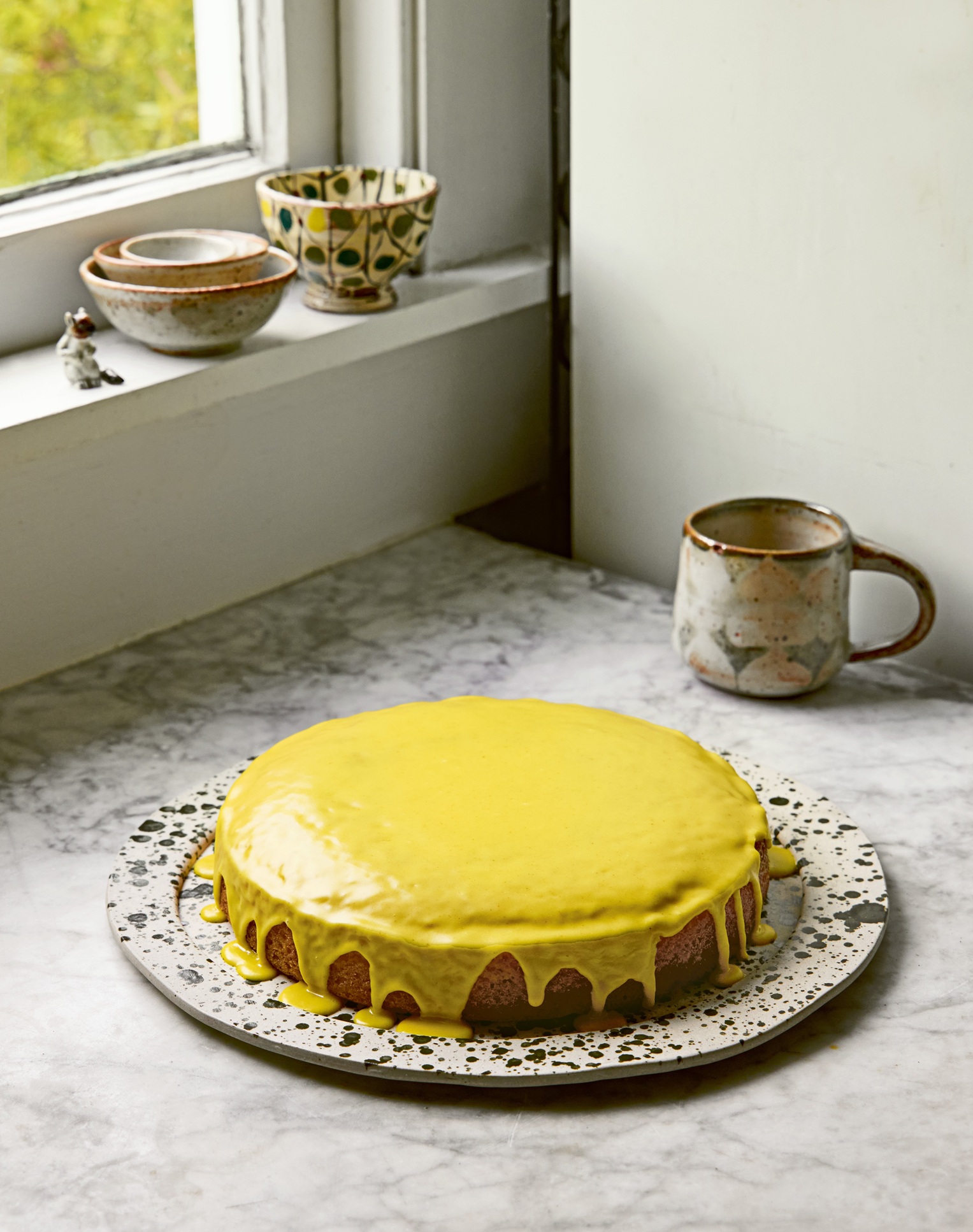 Preserved lemon and labne cake
Preserved lemon and labne cake

I spent three years testing lemon cakes before I thought to make one with two of my beloved kitchen staples. Labne offers tang and contributes to the cake’s tender crumb.
Replacing fresh lemon with preserved Meyer lemon paste not only streamlines the preparation, it also provides the salt, acid, and welcome hint of funk that make this cake an undeniable pleasure to eat. And the simple lemon-turmeric glaze brightens both the colour and flavour of the cake.
Makes 23cm round cake
Cake
250g granulated sugar
180g labne, soured cream,
or Greek yoghurt
110g neutral oil
80g Preserved Meyer Lemon
Paste (pureed preserved lemon)
2 tablespoons (30g) water
2 medium eggs, at
room temperature
180g plain flour
1 teaspoon baking powder
1/4 teaspoon bicarbonate
of soda
Glaze
1 to 2 tablespoons freshly
squeezed lemon juice
1⁄8 teaspoon ground turmeric
125g icing sugar
Pinch of kosher salt
Method
Adjust an oven rack to the centre position and preheat to 180°C. Coat a 23cm round cake tin with nonstick cooking spray, line the bottom with a round of parchment, then spray the parchment and set the tin aside.
To make the cake, in a medium bowl, whisk together the granulated sugar, labne, oil, Meyer lemon paste, water, and eggs.
In a large bowl, whisk together the flour, baking powder, and bicarbonate of soda. Whisk the wet mixture into the dry mixture until smooth. Scrape the batter into the prepared tin and smooth it out into an even layer.
Bake for 40 to 45 minutes, until an inserted cocktail stick emerges free of crumbs.
Let the cake cool in the tin for 10 minutes, then transfer to a wire rack to cool completely.
To make the glaze, in a medium bowl, whisk together 1 tablespoon lemon juice and the turmeric, then let the mixture sit for a few minutes to bloom. Whisk in the icing sugar and salt until smooth, adding more lemon juice as needed to get a drizzly consistency.
Spread the glaze over the cooled cake, letting it drip down the sides. Allow to set for 30 minutes before slicing the cake.
Store leftover cake in an airtight container at room temperature for up to 2 days.




